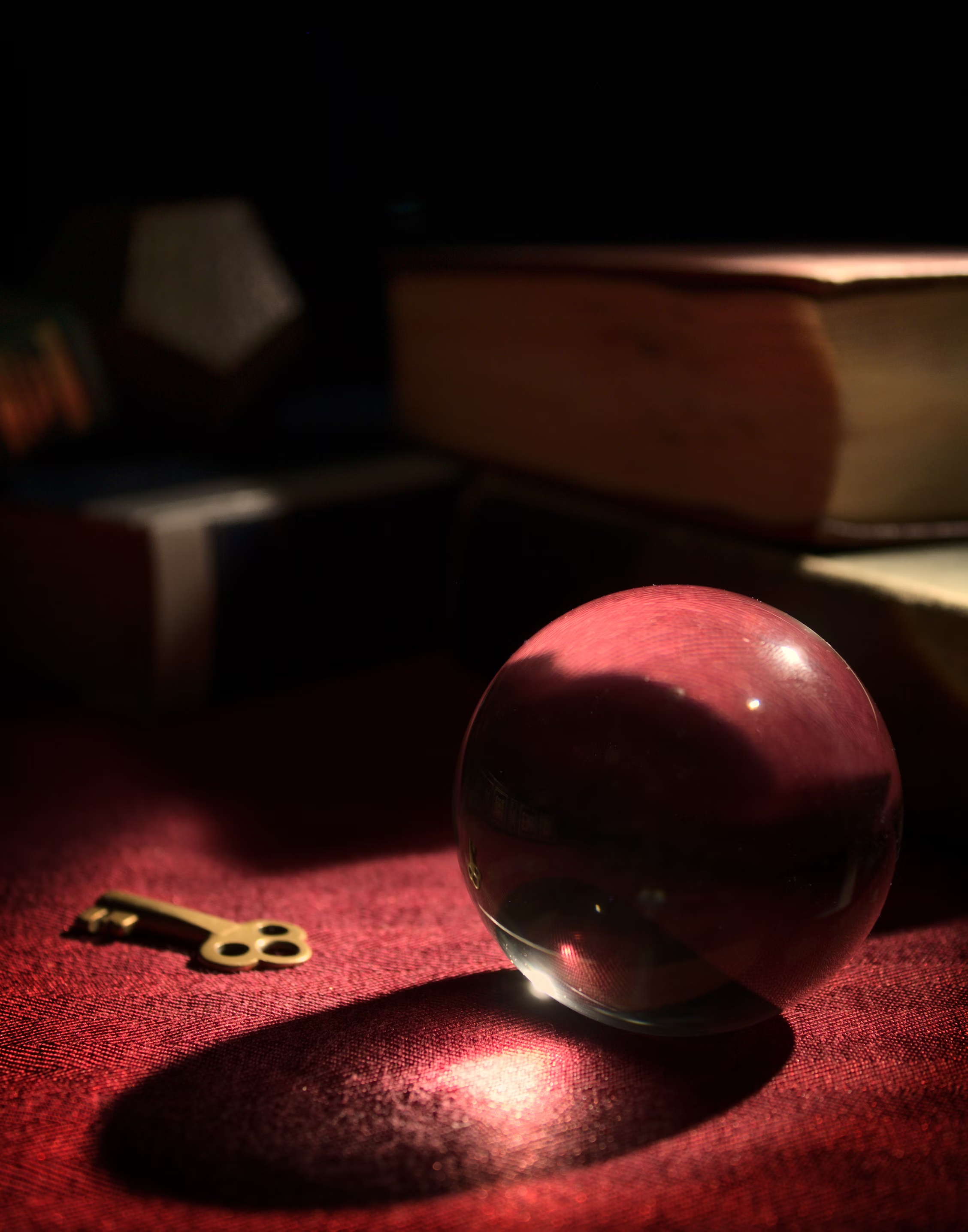Hiring a designer? Well, it's more nuanced than it might seem. That's why we're offering a deep dive on the many different types of design roles in product—from UX Writers and ResearchOps to UX vs. UI Designers. Read on for a description of each role, universal design interviewing tips, and downloadable job description templates to help you get started with your next design hire.
The following is a fictionalized account of the initial discussions around hiring a designer. Any likeness to reality is purely coincidental (and slightly satirical).
“We need to hire a designer,” says the Chief Transformation Officer at T.N.T. Dynomite Technologies, a leading B2B SaaS company transforming the way we innovate transformation.
The Head of Marketing hears this and thinks: fonts and colors.
Engineering pictures roadblocks abound. Just kidding! They picture prototypes and wireframes.
Product imagines endless “research”.
The executive sponsor wonders why they are in this meeting. They discreetly message their EA to remove future occurrences from their calendar.
And the intern is contemplating a side hustle driving for Lyft so they can finally afford a place without six roommates.
The point is: as with any people-related decision in an organization, hiring a designer is more nuanced than it may seem at first blush!
Design Roles Explained
I wrote all about design titles in What CEOs Need to Know About Design: what they mean, what to look for, and how to distinguish one from the next. A few things have changed since then, including the emergence of roles like DesignOps, Design Strategist, and Research Ops.
Below, I’ll explore some of the most prominent design roles in product. Then, we’ll talk about how to determine which roles to prioritize based on your unique needs.
Pssst…already know your design titles? Skip to the end for a shortlist of Universal Design Interview Tips and downloadable job description “starter” templates.
Design Manager
Design Managers are also known as Art Directors, Creative Directors, Design Leads, and/or Design Directors. Art Directors and Creative Directors are more common in advertising or marketing. Design Leads are usually senior Designers responsible for day-to-day work on a project, with one or more other Designers assigned.
Within a leadership team, you may also find a Director or VP of Design or Customer Experience. You might even find a Chief Design Officer (though these are a bit like blue lobsters—rarely spotted in the wild). Like any other function, the more design representation within company leadership, the bigger strategic impact they can have. Tactically, you will need a manager once you get to a 4- or 5-person design team.
Visual Designer (VisD)
Also called Interface Design, User Interface Design (how the thing looks, as opposed to how it acts in Interaction Design), or UI Design. This role owns the top layer (Surface) of Jesse James Garrett’s fundamental model for digital product design from The Elements of User Experience, and collaborates with Interaction Design on the second layer (Skeleton).

They are responsible for the visual language of the product, including hierarchy of information and clarity of available actions. A senior Visual Designer establishes the visual design direction, nails down the final visual system, and applies it to key screens. Junior Visual Designers apply and extend the system to other pages and elements.
Interaction Designer (IxD)
Interaction Designers map to the bottom four layers of JJG’s model, working closely with Product Management, Engineering, Visual Design, and Research. They are responsible for understanding what users are trying to accomplish, what’s technically feasible, and how that might fit in with the business. Then, they create workflows and basic screens (wireframes) that describe how the software will work. Senior IxDs come up with big ideas, organizing concepts, and key workflows and screens. Junior IxDs extend the concepts and patterns to new workflows.
A “Product Designer” is an Interaction Designer at heart (they can do all the interaction design necessary to describe a digital product), and is reasonably competent at visual design. I mentioned this when I wrote my book two years ago and believe it has become even more prominent as time has passed.
That said, I suggest erring on the side of caution when interviewing someone who bills themselves as a Product Designer. If someone has fantastic visual skills, for example, it can be easy to be wowed and forget to ask about or understand how deep their interaction skills go. Be sure the interview process assesses their skills in both disciplines.
Most of the time, depending on the product differentiators, users, and value proposition, I recommend prioritizing Interaction Design over Visual Design. It has a bigger impact in terms of product usability, it often varies widely screen to screen, and, given the visual design libraries available today, it’s harder to fake.
User Experience Designer (UXD)
UXD is the umbrella term for the entire discipline. It’s often used interchangeably with Interaction Designer, especially juxtaposed with UI, as in, “We have three UX Designers and one UI designer.” UXD typically holds a breadth of design skills, including more aspects of research than, say, a traditional “interaction designer.” Since many people use UX in their title, measure their ability by their years of relevant experience.
Warning: Adjacent titles that sound like UXD are commonly used in digital marketing/advertising design, such as Digital/Interactive Art Director, Creative Director, and Interactive Designer; these are not equivalent. Align your job posting accordingly!
And the List Goes On…
More titles abound, alas. It’s worth noting that we haven’t covered them all here. Consider Information Architects, Content Strategists, Service Designers, UX Developers, all part of the pantheon, but we had to stop somewhere?
Need help hiring? Download our “Starter” Templates: Job Descriptions for Design Roles (including the above and roles like DesignOps and ResearchOps) to get a jump start.

Use the above to help you develop a design job posting that attracts the right candidates with the right skill sets. Remember: people are not unicorns and asking them to take on too much will make it difficult to let their skills shine.
A Quick Word on Seniority
The above covers the skills and general responsibilities of different design titles, but you can also consider each of these from an experience level. How different companies designate seniority can vary greatly from one organization to another, but generally, the following adjectives can be used to designate the level of design seniority (from least experienced to most): Junior, Senior, Staff, or Principal.
Like many other disciplines, Designers who move through these ranks typically start as individual contributors, move into people management, and eventually lead design programs and advise the C-Suite.
“Designer” as a Catchall
Understanding the responsibilities and requirements of each design role is a good place to start, but it doesn’t necessarily tell you which role is right for you and when. So, we sat down with Margaret Francis, Executive in Residence at Costanoa Ventures, to unpack design hiring and explore the misuse of the generic title: Designer.
Audrey: We’ve both enjoyed long careers in tech and have watched design go from a supporting player to a strategic imperative in product development. At least for the “design enlightened” folks who get what design is really all about! What misconceptions do you think still remain when it comes to hiring designers?
Margret: Design has absolutely made strides in being seen for its strategic value. Unfortunately, I still see lots of confusion when it comes to hiring designers.
People often use “Designer” as a catchall title. What they really mean is Design Manager, Visual Designer, Interaction Designer, User Experience Designer (UXD), and Design Strategist all rolled into one superhuman being.
Audrey: That does sound like a super human, but maybe one that doesn’t exist?
Margret: Exactly. And that’s the challenge resource-strapped product teams often face. They don’t quite understand which skill set is most important, and when. So, they look for a “Designer” who can cover most of these bases.
Audrey: That makes sense given they don’t have the budget, or even need, for full-time hires to cover all of these specializations. But, it’s a pretty bad trap to fall into. How would you suggest emerging product teams prioritize their design hires?
Margret: For early stage startups, I’d recommend bringing on a Product Designer who is well-versed in interaction design, but has some visual design skills. Once you’ve established product market fit, then, consider investing in a visual designer who can serve the needs of product, marketing, and sales. You’ll be ready to bring on more specialized design skills when the product begins to scale.
Audrey: I’d agree with all of that and note that there will, inevitably, be tradeoffs along the way. Visual design is so important, but if you only get that right…well you only get that right.
Universal Design Interview Tips
Now that you know more about design roles, you’re probably wondering how to determine if someone is a good fit for each of the different titles. That is a whole series in and of itself (shoot me a note if you’d be interested in that!), but there are some universal interview techniques that can help you evaluate the potential of a design candidate.
Margaret and I recently covered hiring tips during a webinar with Costanoa’s portfolio companies. Here is a short list of universal design interview techniques we covered in the webinar:
- Don’t have design expertise on staff? Bring in outside support for the interview process—be it a partner, friend, or consultancy (yes, DesignMap helps with job descriptions and interviews!). You’ll want a trained ear and eye to help write a job description that brings in the right applicants and can help guide interviews in the right direction.
- Review the candidate’s portfolio in realtime and ask questions like: What did you do vs. other members of the team? Can you show me some of the sausage making work beyond the final product (sketches, mockups, etc.)? Could you tell me about a time you needed to pivot? Portfolios often only show one dimension of multidimensional work. Give candidates the opportunity to talk about the process that led to the final product.
- Always offer critical feedback in an interview. Even if it is the most fantantabulous portfolio you’ve ever seen, look for opportunities to question their approach. You want to get a sense for how they take feedback. Receiving and incorporating feedback is a core part of every designer’s role. If they can’t articulate the choices they made or welcome your feedback with an open mind, you might be experiencing what it will be like to work together. (Just don’t forget that interview jitters are real. A red flag would be defensiveness—not nervousness! Nerves are more of a sign that they are, in fact, a living breathing human and not a cyborg.)
Hiring Internal v. External Design: It’s Not This or That
Hiring Designers isn’t easy. Heck, that’s why I devoted an entire chapter of What CEOs Need to Know About Design on the subject.
Consequently, lots of people ask me whether to bring in an external design consultancy or hire and build an internal team. The bottom line is that you should hire. Design is, and should be, a core competency.
I know—not the answer you’d expect from a consultancy!
Of course, there are still times when a third-party perspective is needed to jump start or reinvigorate your product design. Consider bringing in outside design partners for the same reasons you’d bring in engineering help, a leadership coach, or a marketing consultant: to harness the full potential of your team. There’s nothing like a fresh, skilled perspective—one that is free of internal politics and bias—to help your team rediscover their purpose.


